I got excited a few days ago when we saw a van for Antbird Immersive Birding Tours parked on the street here in El Valle de Anton. Then I looked up the website and realized it’s an excursion tour, the kind of place that does all your hotels and restaurants while taking you out to see tropical birds.
All too often, we tend of think of birding as big expeditions of epic hikes into hard-to-reach places, fording rivers, climbing rocks, scaling mountaintops, or boating to remote islands. And don’t get me wrong: There is something to all of that, and I’m glad folks—myself included—like to do those sorts of things to find and record these beautiful creatures.
However, it’s also possible, especially here in the tropics, to walk down the street or, depending on the size of the yard, look up into the trees and see a few dozen species. The last couple of days I’ve done just that, along with a quick tour around the garden at El Nispero Zoo. Here are the results (bird photos follow descriptions):
My number of bucket list birds continues to increase as I see and learn more. This charming blue fellow with red legs, a Red-Legged Honey Creeper, is one of those I’ve been anxious to see. One appeared in an old, dead tree at the zoo, but I knew the lighting wasn’t great. So, it was wonderful when I walked down the street in our neighborhood a few hours later and found one just hanging out, waiting for his photo session. The bright colors make him seem like a festive fellow.
This gorgeous little guy chose the perfect light and the perfect spot from which to pose. He’s a Yellow-Crowned Euphonia.
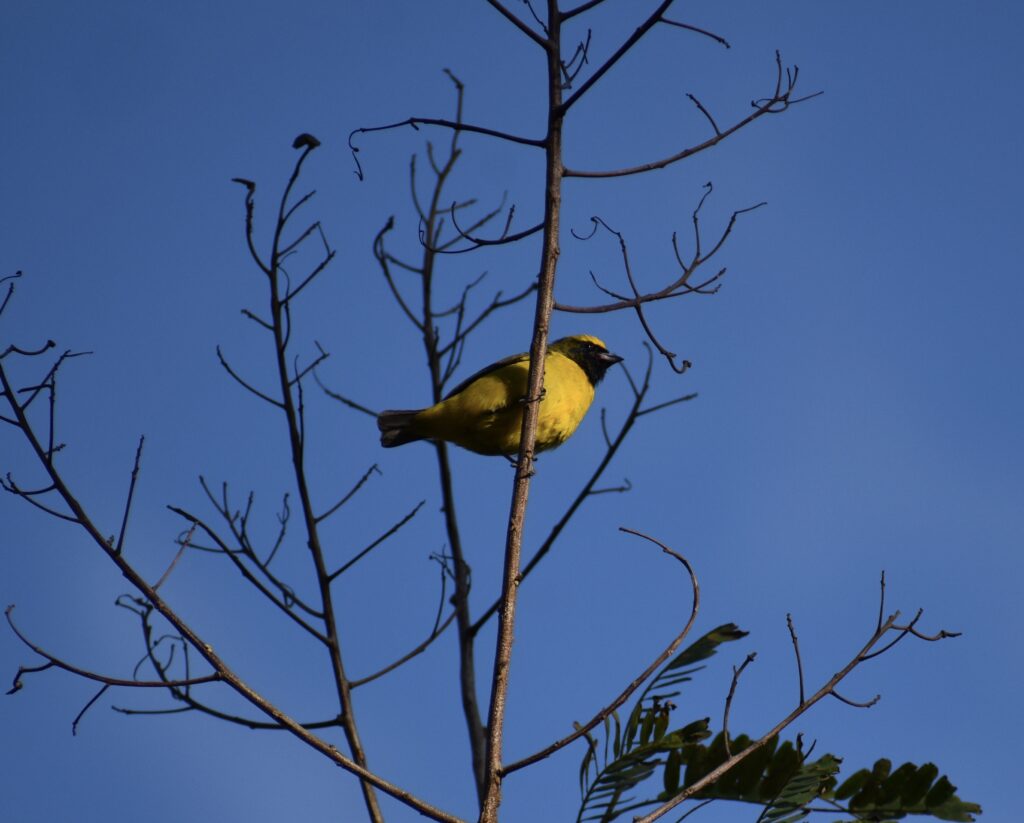
When we hiked Cerro Ancon in Panama City (http://heathers6wadventures.com/nature-and-history-in-the-city-cerro-ancon-y-mi-pueblito/), we learned what a Keel-Billed Toucan sounds like—kind of a cross between a frog and pig. Honestly, it’s one of the few bird calls I’ve learned to distinguish! Just as I went out one evening, I heard a toucan not far away and began following the call. A rooster crowed, and the toucan silenced. A few minutes later, just after I’d finished the session with the red-legged honey creeper, the toucan started up again. It was huge, easy to spot in the tree and backlit by the setting sun. It let me get some great shots before setting off to go make noise somewhere else.
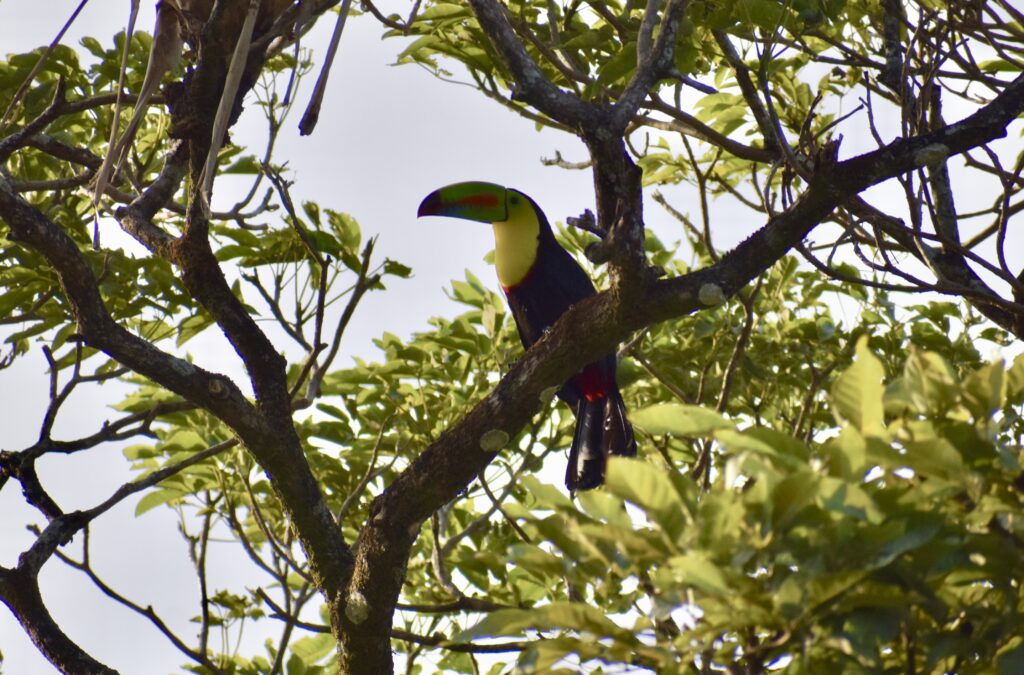
I vacillate between the Blue and Gray Tanager and the Crimson-Backed Tanager for my favorite bird. (One of my new goals is to find them in a tree together!) These beauties are common, the crimson-backed hang out in hedges more often than trees and tend to be more flighty than their blue-gray cousins.
This is another rather rare one that the folks at the Cornell Laboratory of Ornithology (https://www.allaboutbirds.org/news/) congratulated me on. I was wrong on the last one. (It was not a blue-crowned motmot. It was a whopping motmot, a new sub-species of the blue-crowned—and how was I to know when all of my resources pointed me to blue-crowned?) Anyway, this time I’m pretty sure I’m right. It’s an Eastern Wood Pewee, and it looks exactly like the one in my birding guide. I’m sticking to that ID!
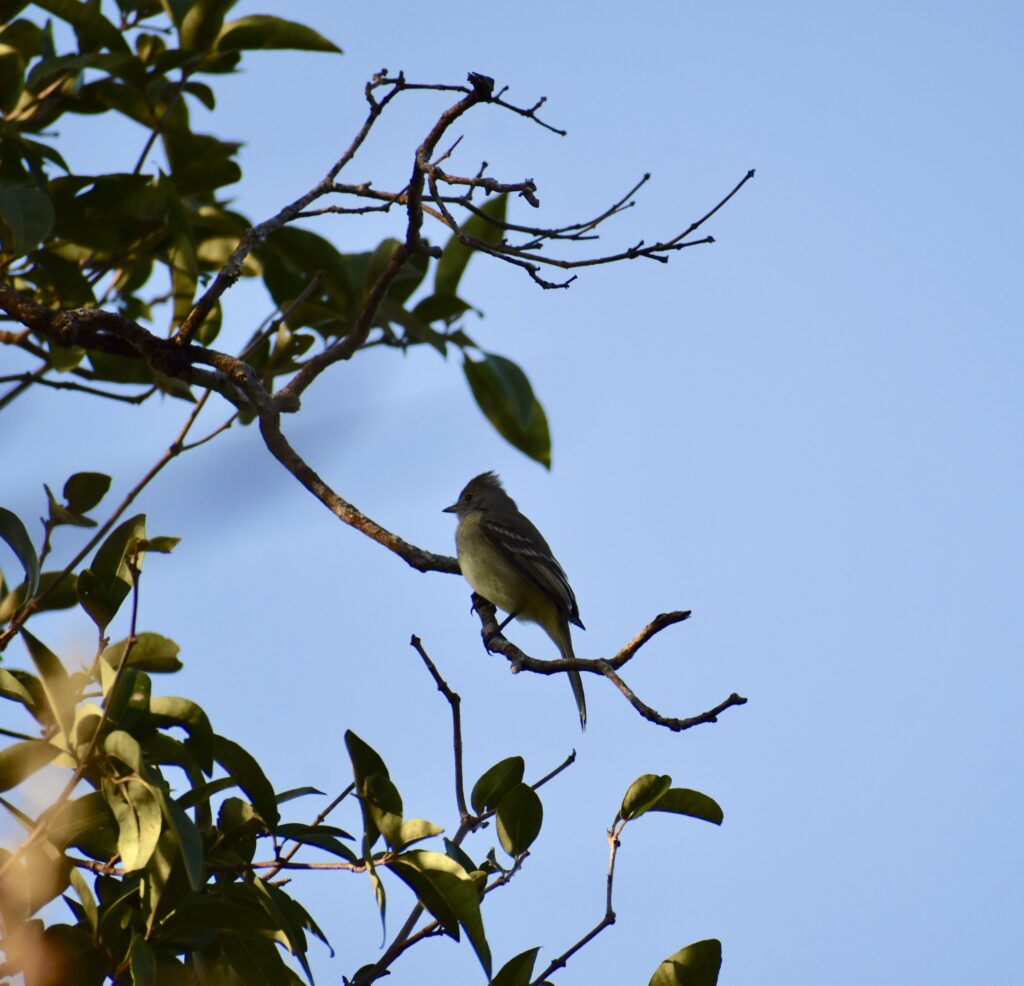
Parakeets are common in Panama. We saw large flocks in the city, especially around the big, old trees in the dog park, and I’m finding the same here. They almost always travel in pairs, and this couple proved particularly accommodating for a photo session. They are the widely common Orange-Chinned Parakeets.

Gray-Headed Chachalacas not only have one of the coolest names in birding, they are a blast to watch. I’d seen a small flock in Costa Rica (http://heathers6wadventures.com/rich-living-in-the-rich-coast/) and then got to see a couple of flocks frolicking around the garden at the zoo. They danced, and preened, and even kissed.
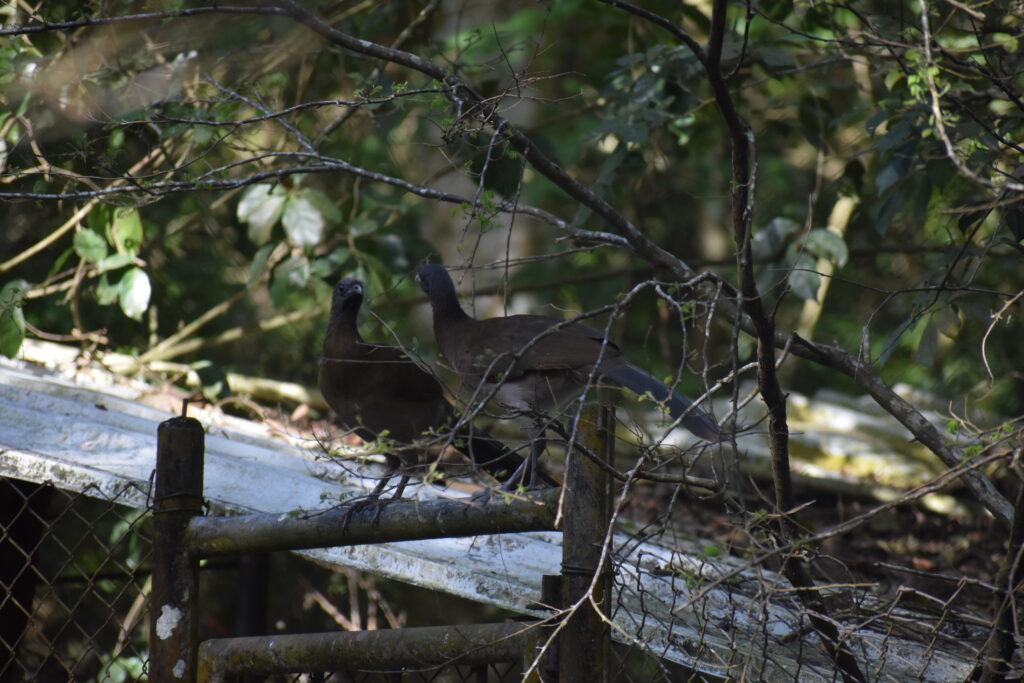

Another great bird name is Chestnut-Headed Oropendola. Several of these make El Nispero Zoo their home, living at the zoo, not in the zoo, to take advantage of the abundant water (especially during dry season) and other resources. Like the Montezuma Oropendolas, their cousins we saw in Belize last spring, they weave long nests that hang down from the trees. They especially show off their bright, beautiful tail feathers in flight.

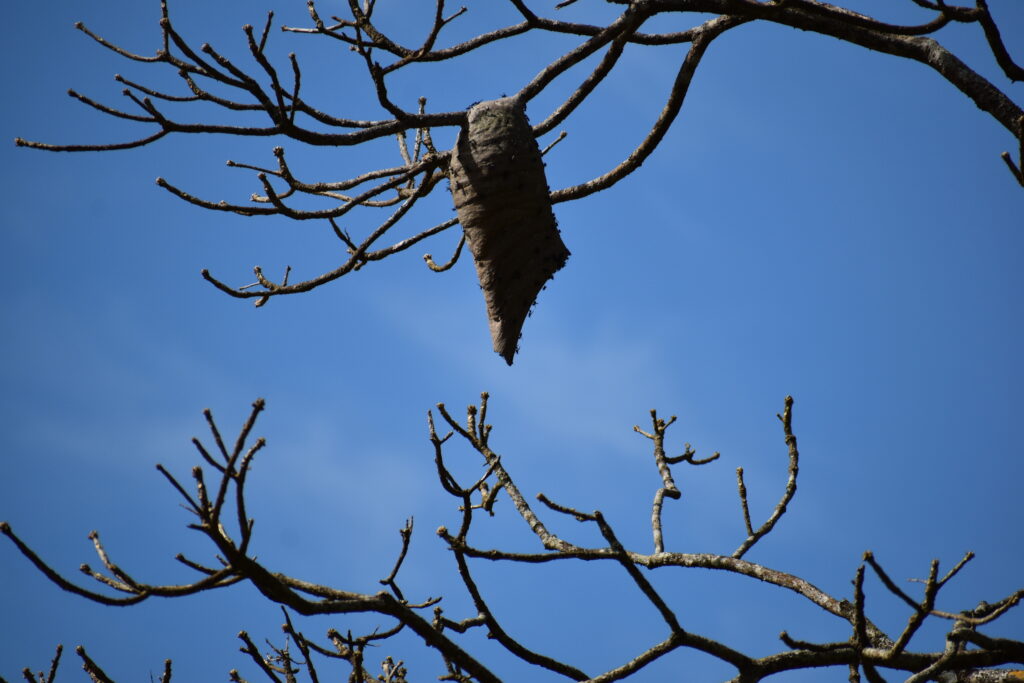
We saw a couple of these Gray-Necked Wood-Rails in Costa Rica, wandering around a creek near the entrance to Manuel Antonio National Park. This one found a comfortable spot in the garden at the zoo and posed particularly well.
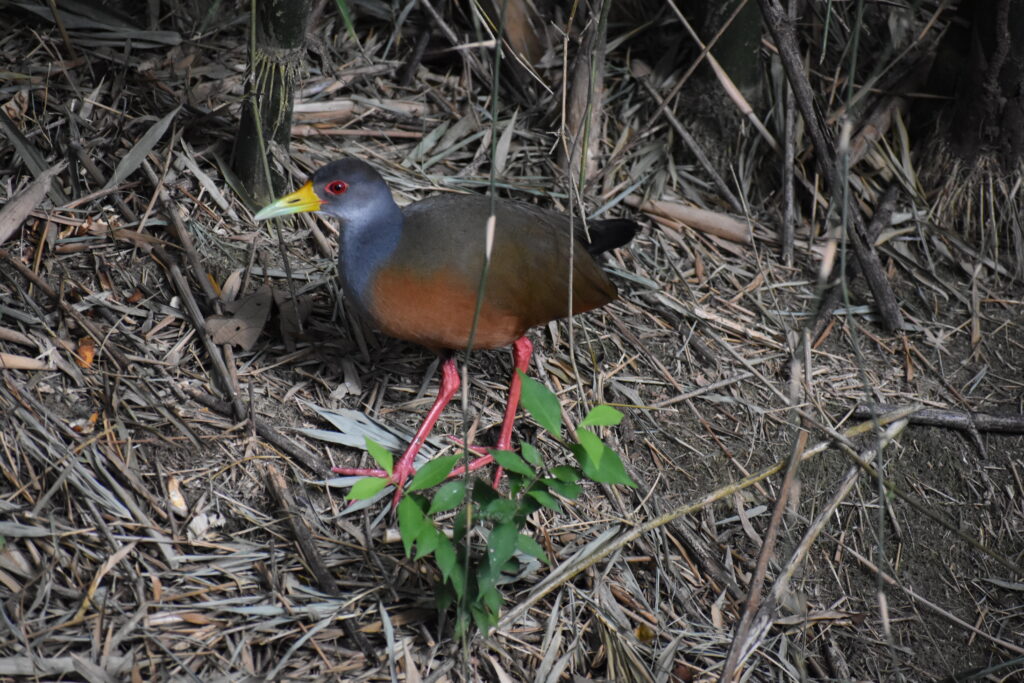
This one took some research as it’s not in my “Birds of Western Panama” guide from Rainforest Publications. I was happy to figure out it is a Streaked Saltator, with a beak similar to grosbeak, but it’s not a grosbeak.
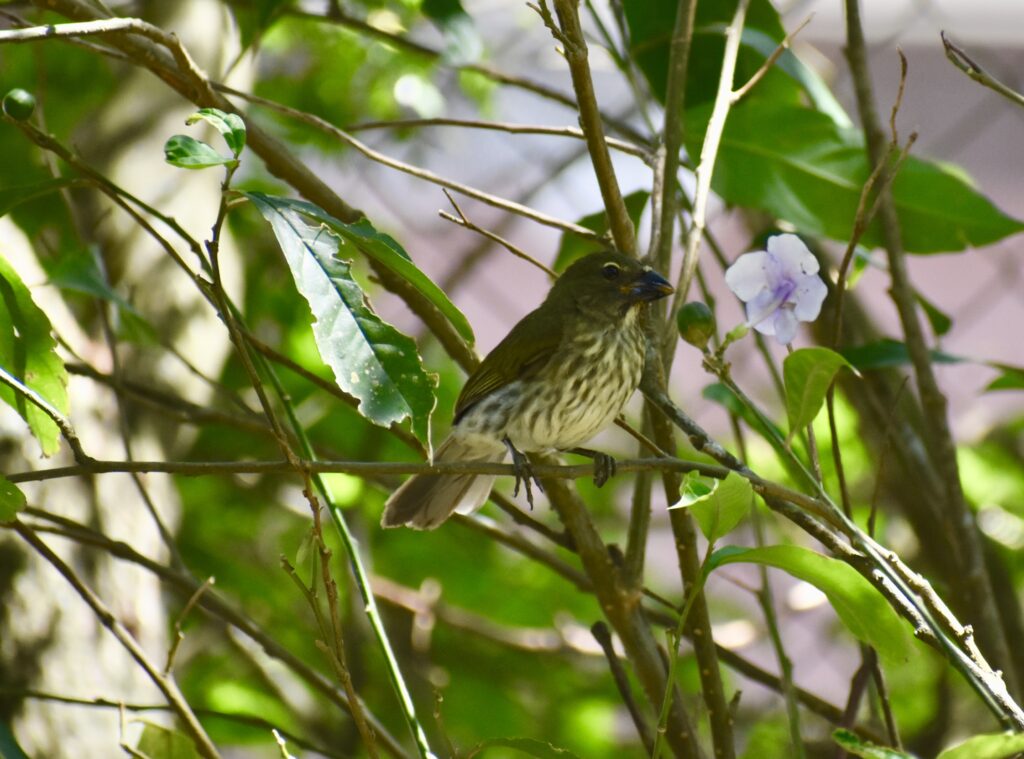
The bird in this photo may look like a robin. It is the same size as a robin, behaves exactly like a robin, and sometimes even sounds like a robin. It’s called a Clay-Colored Thrush but used to be known as the clay colored robin. It’s found from Mexico to Columbia and has recently been seen as far north as Texas. They are not shy and seem to rule the yard.

Panama is the southernmost range for this sweet little traveler, the Tennessee Warbler, which has a pretty song. They are quite common here this time of year but soon will be headed north to eastern Canada, where they breed.
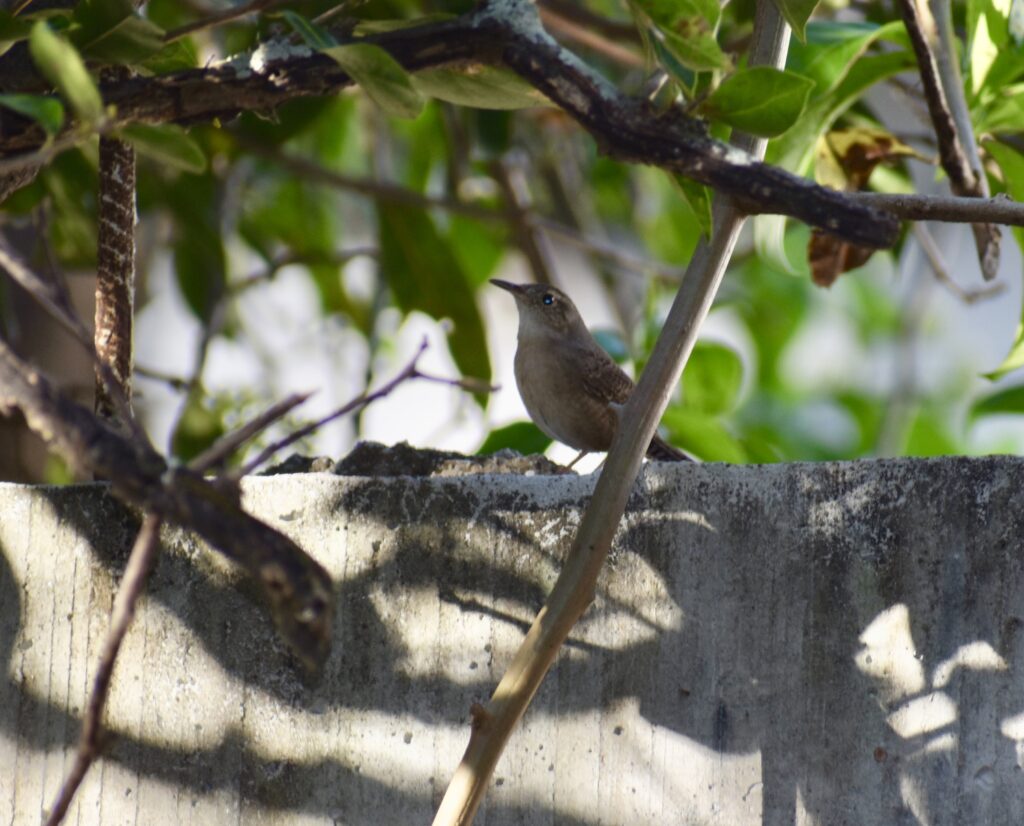
I’m developing a love/hate relationship with hummingbirds. How can one not love these small, charming, often iridescent creatures who flit from flower to flower? They are jewels and can bring great joy. Trying to photograph and identify them, though, can be frustrating. I think I have all of these folks ID’ed properly, but if any of you out there reading this have other ideas, let me know.
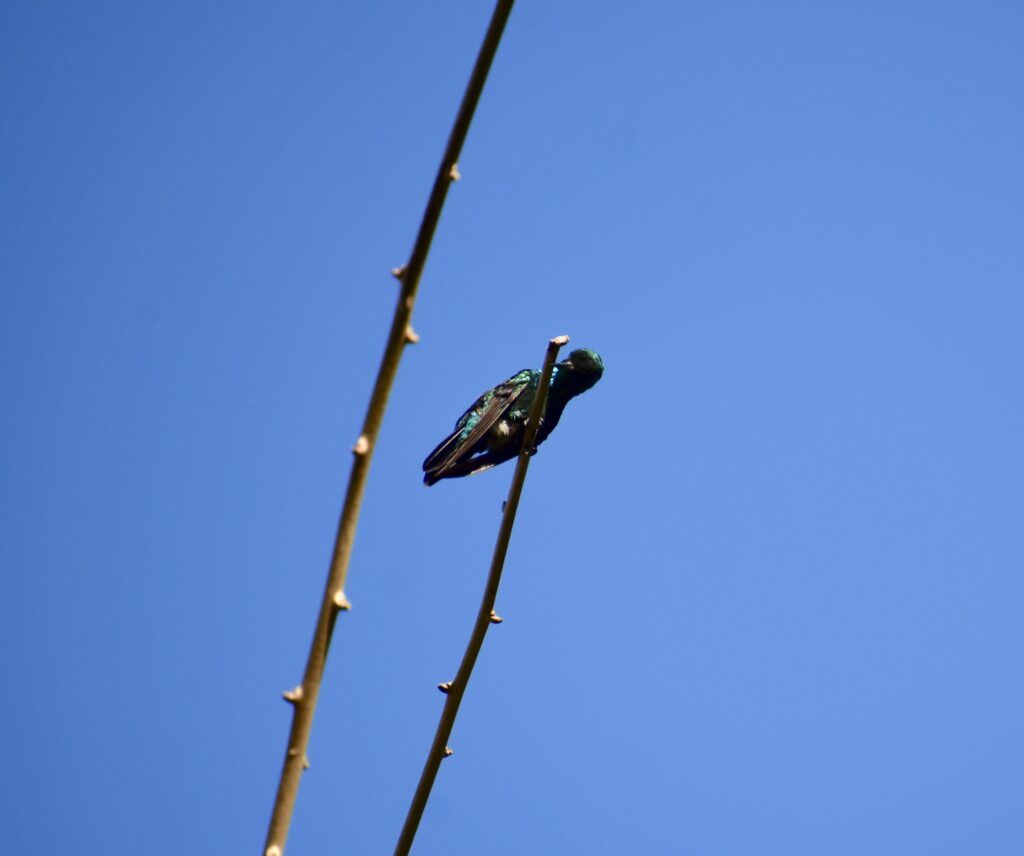
Garden Emerald

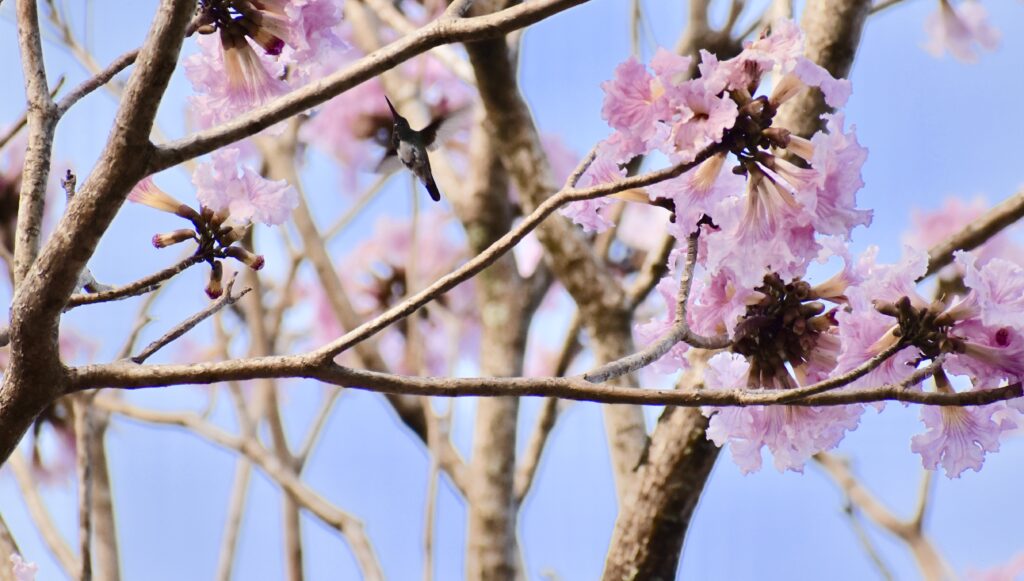
Snowy Bellied (female)
Finally, this isn’t a bird at all, but I firmly believe in sharing cute sloth photos whenever they are available. This little guy was climbing up the tree outside our Air B&B just as we sat down to lunch. As soon as we walked over to watch it, it froze, probably hoping we weren’t Harpy eagles or jaguars. “If I don’t move, you can’t see me!” I’d show the video, but it didn’t move for more than an hour, meaning there’s not much to see. The still photos do it more “cute” justice.
Going through these photos again has me inspired. I’m ready to go birding this afternoon! Let’s get out and explore.






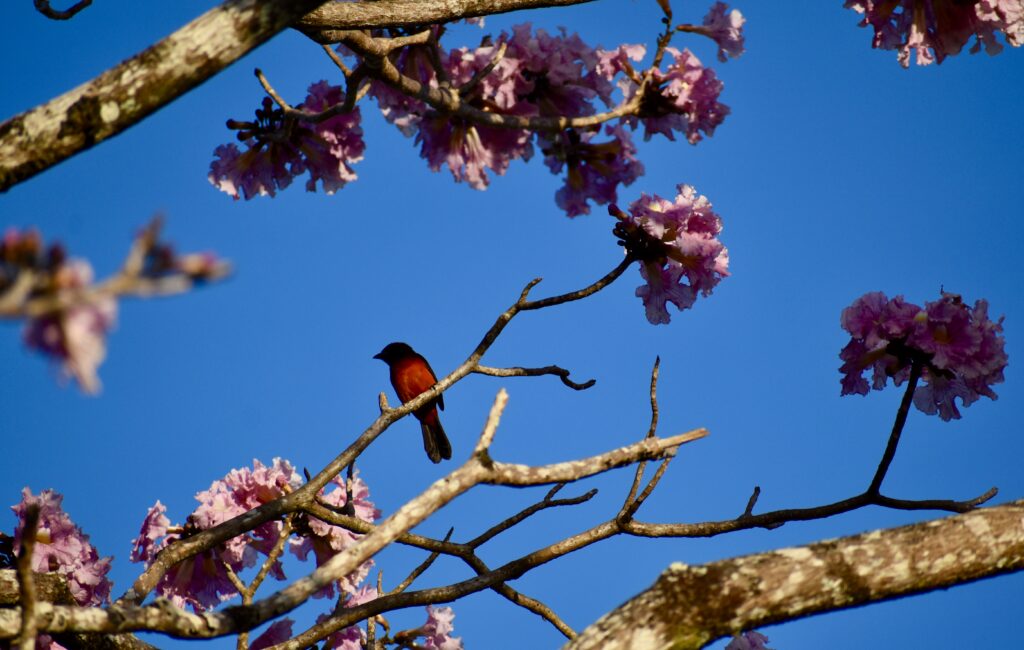
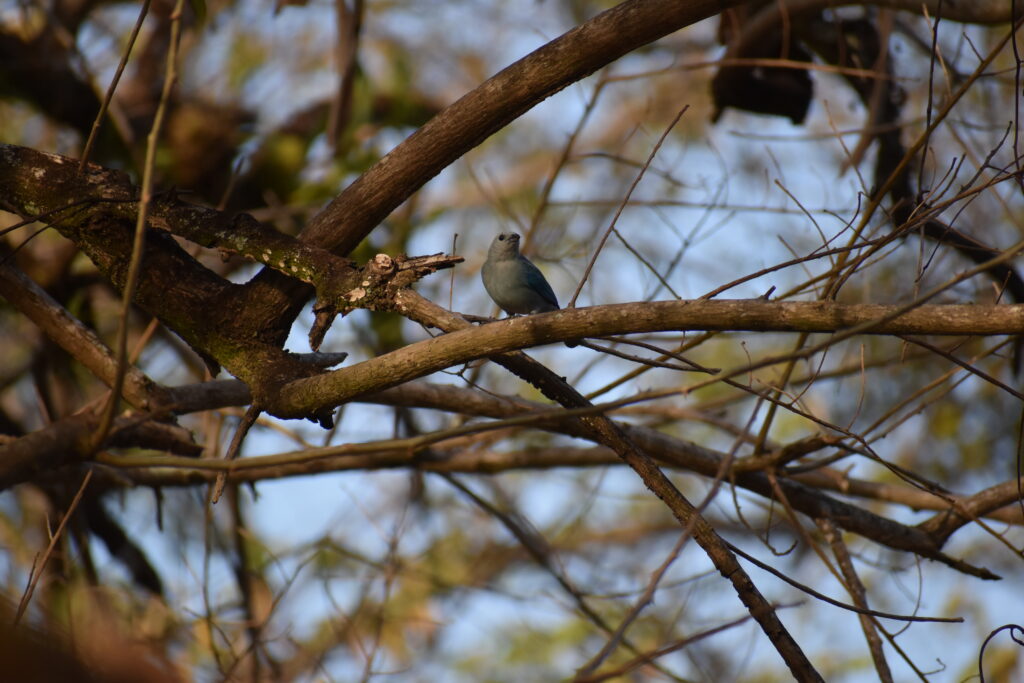
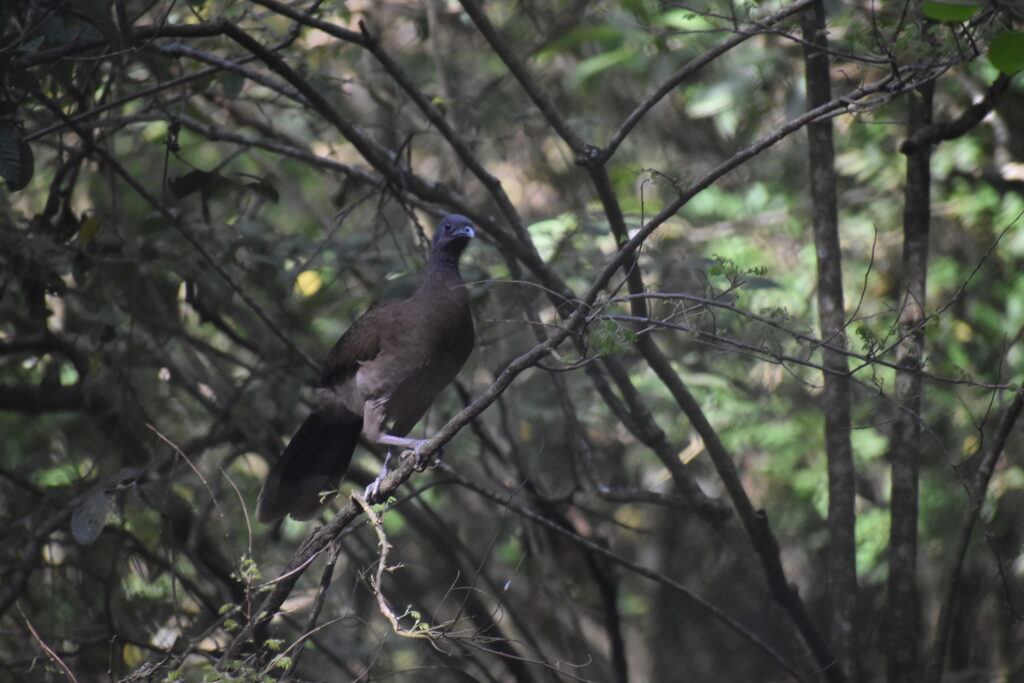
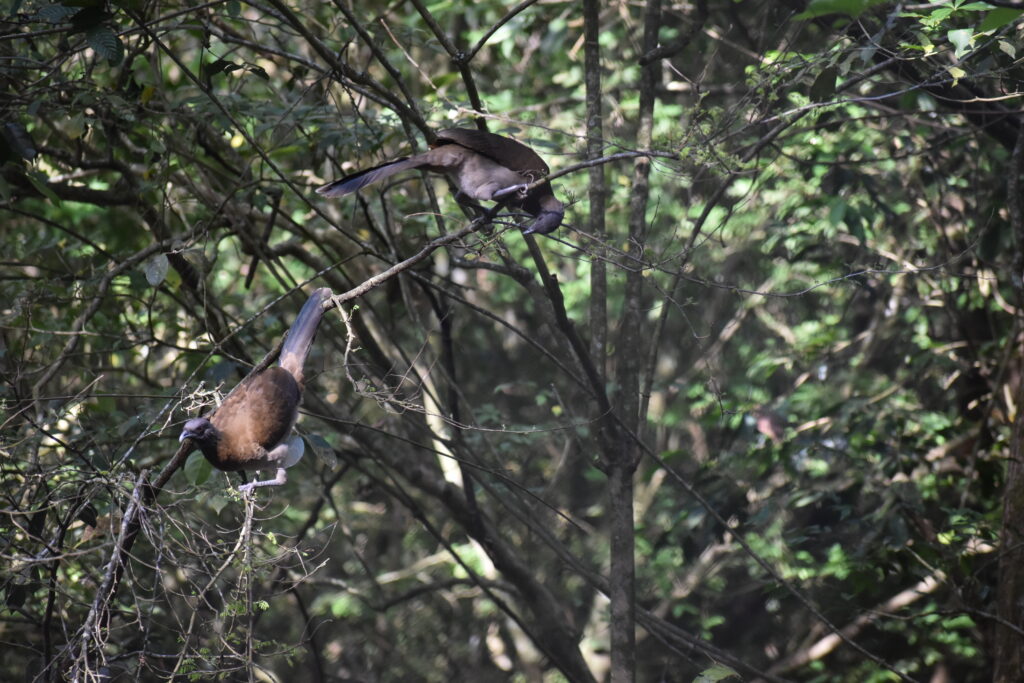

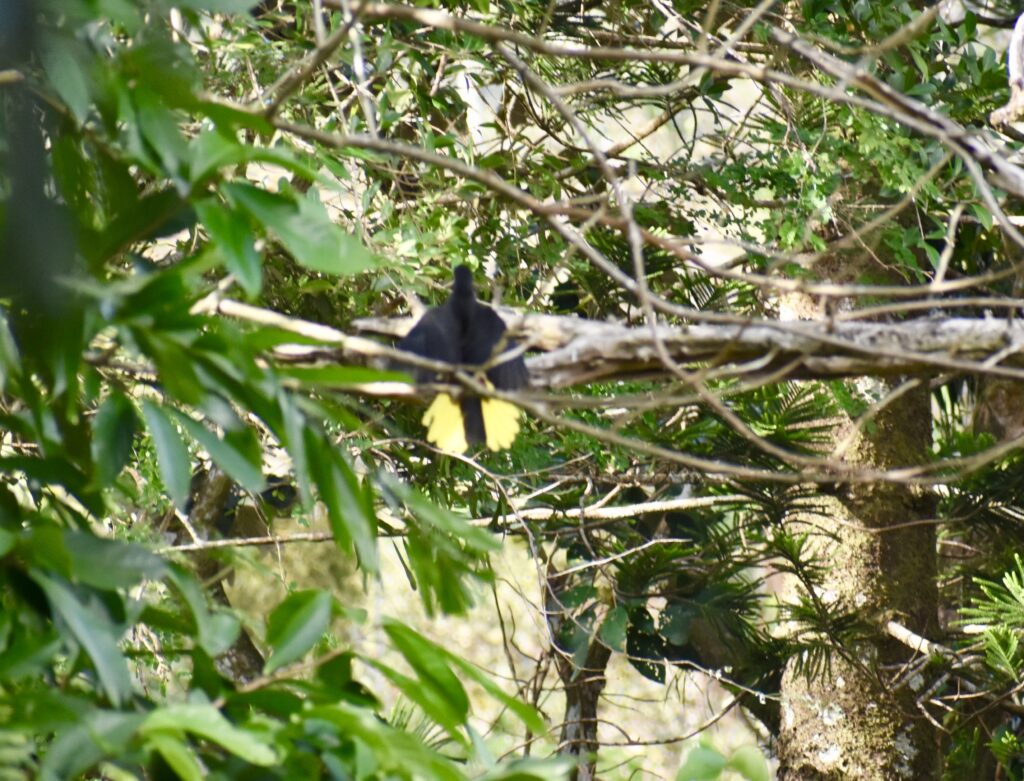
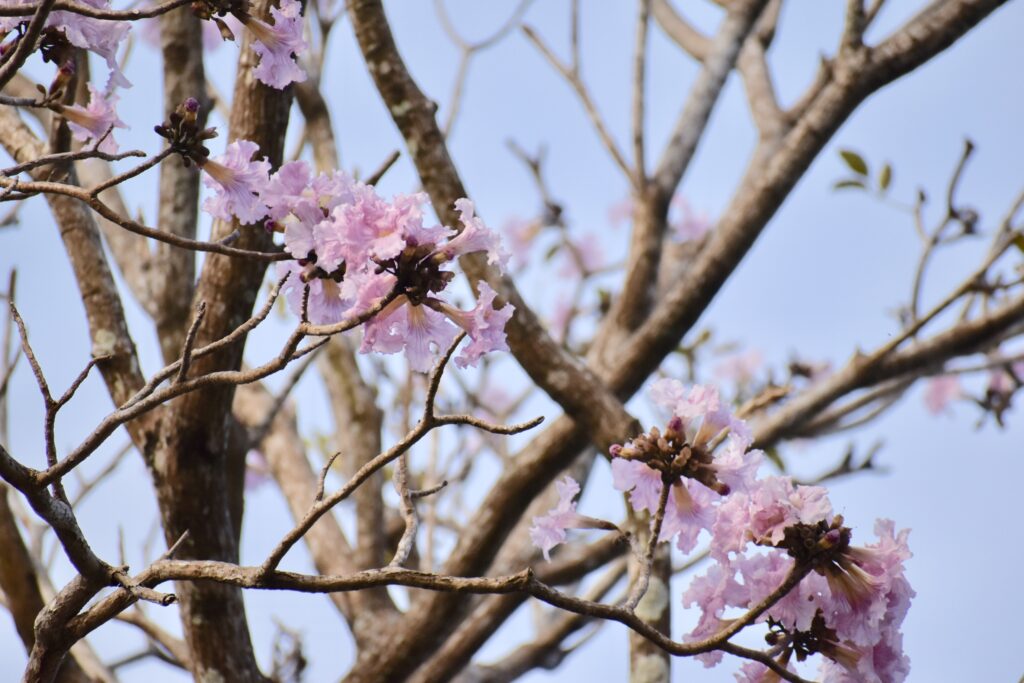

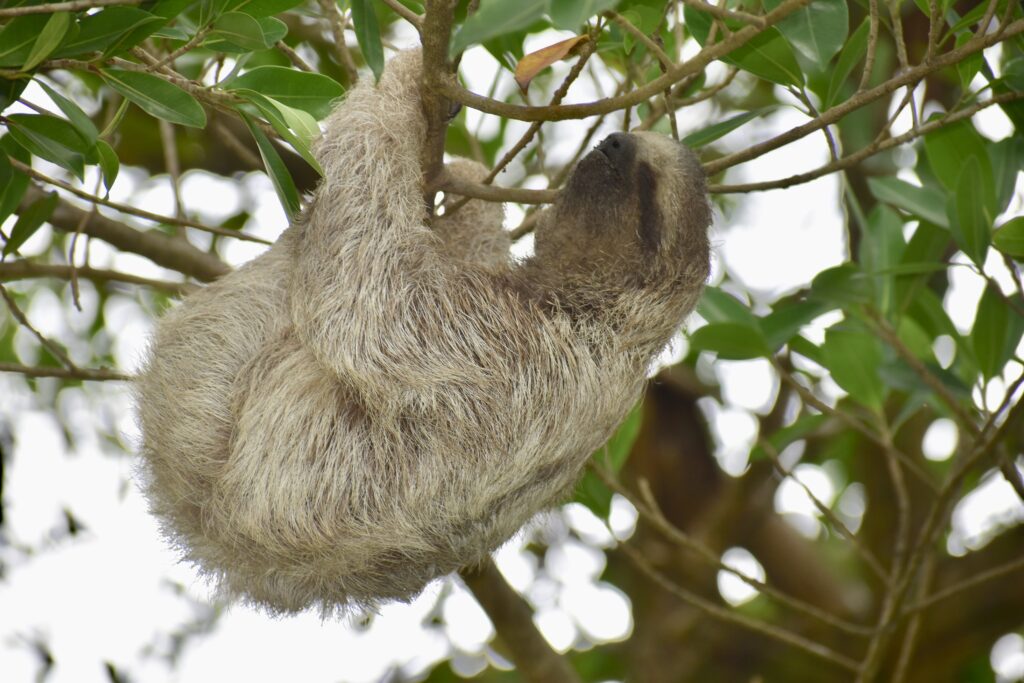
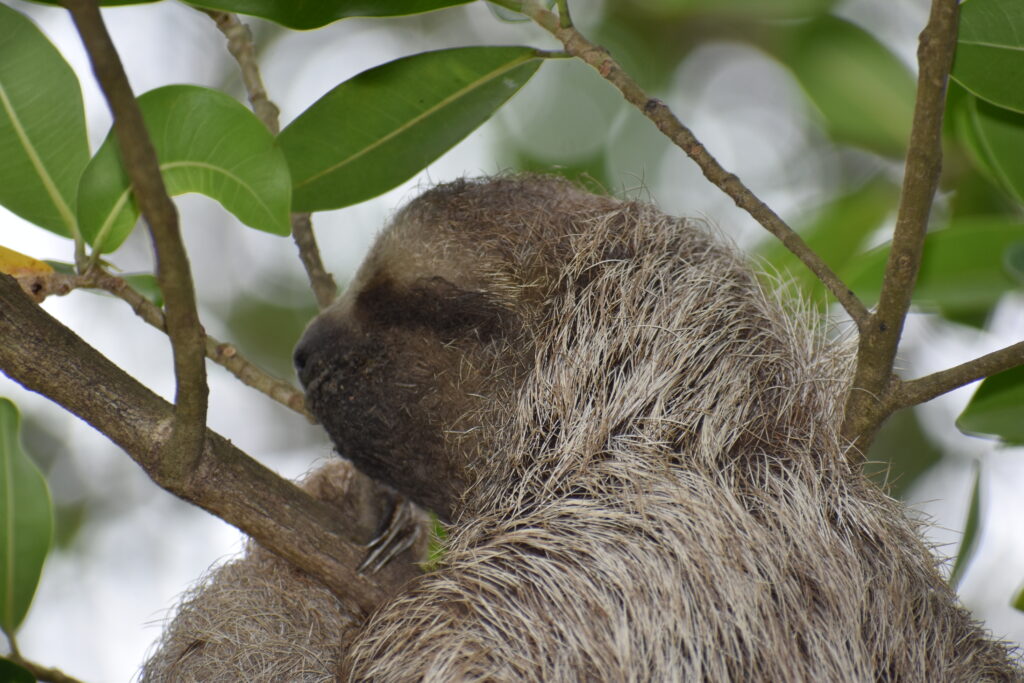
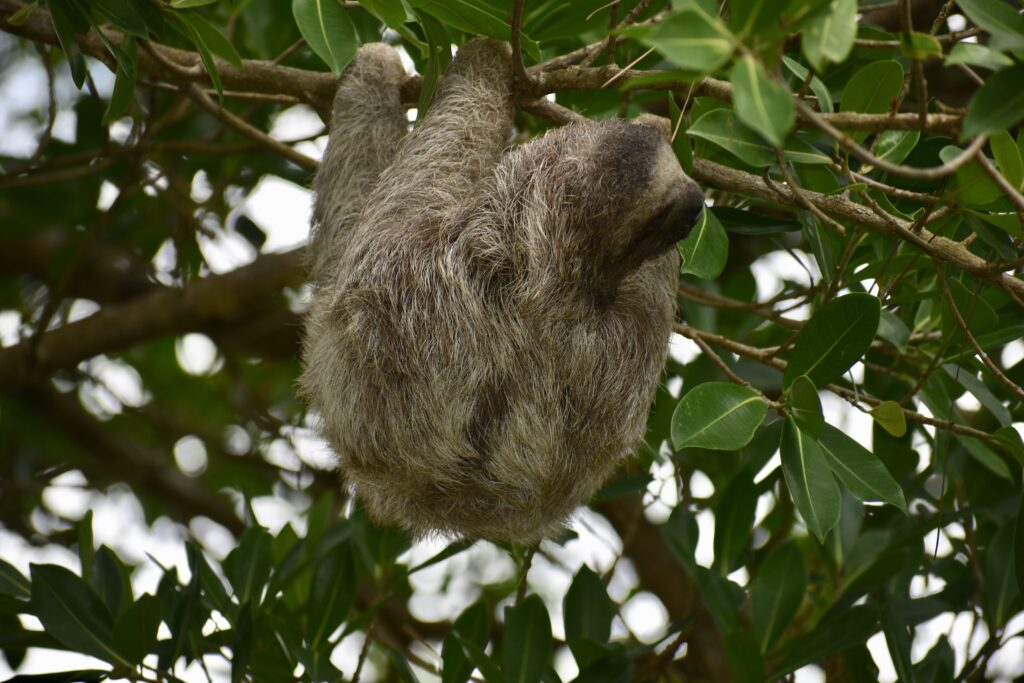

Fun! Such pretty creatures! You are learning so much!
Who knew there were so many beautiful and interesting birds in the world? It’s so fun to find them right in the backyard!